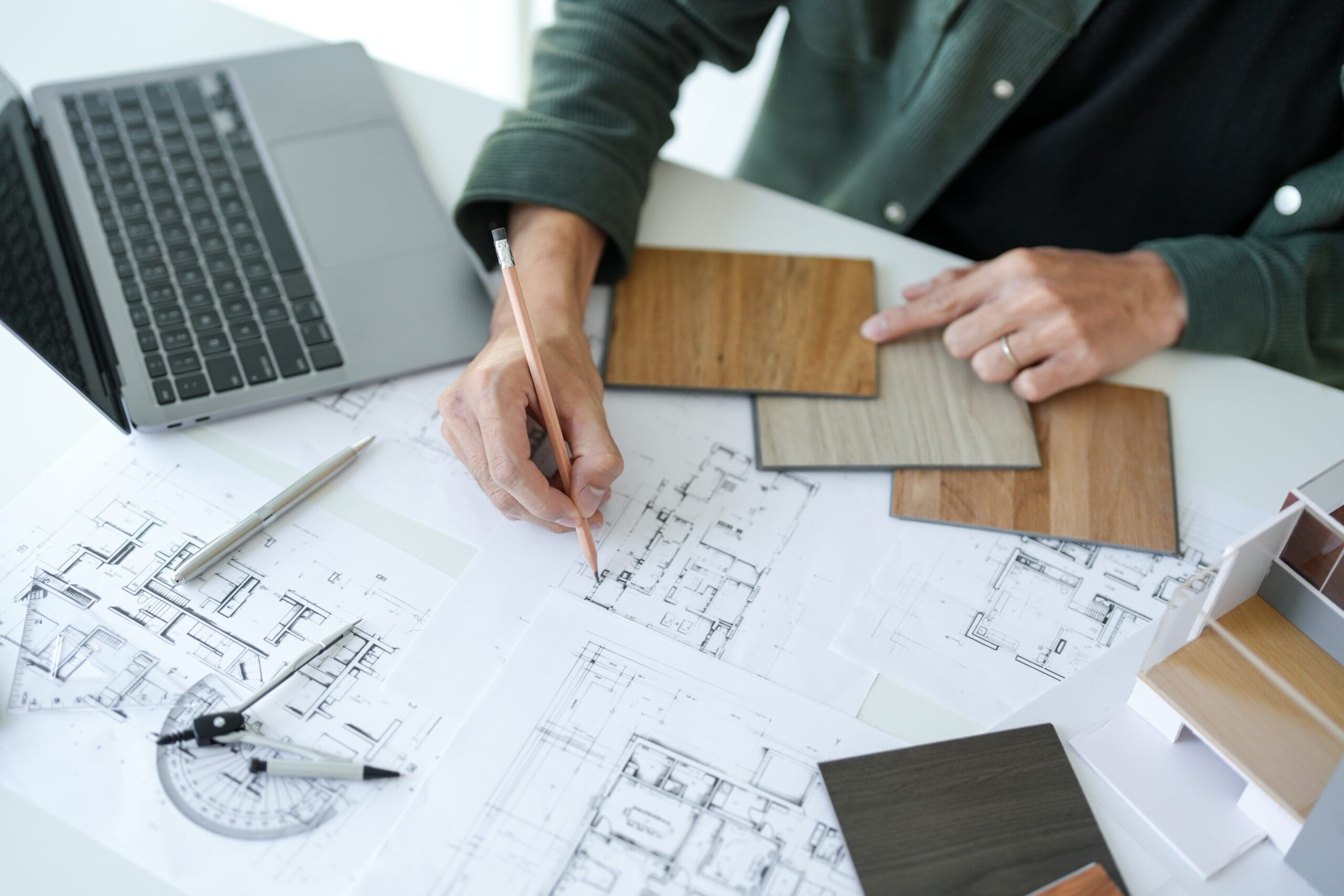What qualifications do I need to be an Interior Designer?
Everything you need to know about qualifications to become an Interior Designer
Are you captivated by the allure of beautifully designed spaces and have a passion for creating environments that inspire and comfort? If so, embarking on a journey to become an interior designer might just be your calling. This rewarding career offers the perfect blend of creativity and functionality, allowing you to transform ordinary rooms into extraordinary experiences.
As an interior designer, you’ll have the opportunity to work with diverse clients, each with unique tastes and needs, challenging you to continually innovate and adapt. Whether you’re drawn to minimalist aesthetics or opulent interiors, the world of design awaits your personal touch. So why not take that first step towards turning your passion into a fulfilling profession? Discover what it takes to thrive in this dynamic field and start shaping spaces that truly reflect individuality and style.
In this Interior Designer qualifications guide
Qualifications to be an Interior Designer
Embarking on the journey to become an interior designer is both exciting and rewarding, offering a unique blend of creativity, technical skill, and personal expression. In today’s competitive market, having the right qualifications is essential to stand out and succeed. While a natural flair for design is invaluable, formal education and training provide the foundational knowledge necessary to transform your passion into a profession.
Pursuing a degree in interior design equips you with critical skills such as space planning, colour theory, and an understanding of materials – all vital for creating functional and aesthetically pleasing environments. Additionally, accredited programmes often offer exposure to industry-standard software tools like AutoCAD or SketchUp, ensuring you stay ahead in this dynamic field.
Beyond formal qualifications, gaining practical experience through internships or apprenticeships can significantly enhance your employability. These opportunities allow you to work alongside seasoned professionals, giving you insights into client relations and project management that are crucial for any successful interior designer.
In essence, while talent opens the door to this creative career path, acquiring the right qualifications ensures you have the skills needed to thrive in it. Whether you’re just starting out or looking to enhance your expertise further, investing in your education will undoubtedly pay dividends as you craft beautiful spaces that inspire those who inhabit them.
What qualifications are needed to be an Interior Designer?
To commence on a career as an Interior Designer, understanding the qualifications required at various educational levels is essential. Whether you’re just starting or looking to advance your skills, each level offers distinct opportunities and roles within the field.
Level 2 Interior Designer Qualifications
At Level 2, aspiring interior designers are introduced to the basics of design principles. This level typically includes a Diploma in Interior Design or a Certificate in Decorative Techniques. Students learn fundamental skills such as drawing techniques, colour theory, and basic spatial planning. The role at this stage is primarily supportive; individuals might assist experienced designers by helping with mood boards or sourcing materials. It’s an excellent starting point for those new to the industry, providing a solid foundation upon which to build more advanced knowledge.
Level 3 Interior Designer Qualifications
Progressing to Level 3 involves honing your skills with more complex projects and applications. Qualifications like the BTEC National Diploma in Art and Design (Interior Design) or an Advanced Apprenticeship offer deeper insights into design software, client communication, and project management. At this level, students begin taking on more responsibility – perhaps managing small-scale projects under supervision or developing detailed design proposals. This stage aims to bridge foundational knowledge with practical experience.
Level 4 Interior Designer Qualifications
Reaching Level 4 signifies a move towards professional practice with qualifications such as a Higher National Certificate (HNC) or Higher National Diploma (HND) in Interior Design. Here, learners engage with advanced design concepts including sustainable practices, commercial interior solutions, and complex project execution. Roles at this level often involve leading projects from concept through completion independently or working as part of larger architectural teams on significant developments.
Each qualification not only enhances technical abilities but also opens doors to diverse roles within the interior design industry – from residential specialists to commercial space planners – ensuring you are well-equipped for a rewarding career path tailored to your aspirations.

Professional bodies for an Interior Designer
For interior designers aiming to elevate their careers and establish credibility, joining a professional body is an invaluable step. In the UK, several esteemed organisations offer membership opportunities that can enhance your professional standing and open doors to new opportunities.
The British Institute of Interior Design (BIID) is one of the most prominent bodies in the field. As a member, you gain access to a wealth of resources, including networking events, educational programmes, and industry insights that can significantly bolster your career.
Another key organisation is the Chartered Society of Designers (CSD), which caters not only to interior designers but also to professionals across various design disciplines. Membership with CSD provides recognition as a chartered designer and offers numerous benefits such as professional development workshops and exclusive industry events.
Additionally, consider joining the International Interior Design Association (IIDA). While it operates globally, its UK chapter offers specific advantages tailored for local designers. Membership with IIDA connects you with an international community of design professionals and provides access to cutting-edge research and trends in interior design.
By aligning yourself with these respected bodies, you not only enhance your credibility but also position yourself at the forefront of innovation in interior design.
Training fees to become an Interior Designer
When considering a career in interior design, it’s essential to understand the training fees associated with obtaining the necessary qualifications. As you progress through the levels of training – Level 2, Level 3, and Level 4 – you’ll find that each stage comes with its own set of costs and benefits.
At Level 2, you’re laying the groundwork for your interior design education. This stage typically involves learning basic design principles and gaining an understanding of materials and techniques. The fees at this level are generally more affordable, making it an accessible starting point for many aspiring designers.
Advancing to Level 3 involves a deeper dive into specialised areas such as space planning and advanced colour theory. This level is crucial for developing a more comprehensive skill set that will prepare you for real-world projects. Consequently, the fees at this stage reflect the increased depth of study but remain a worthwhile investment given the skills acquired.
Finally, reaching Level 4 signifies a high degree of expertise in interior design. At this advanced level, you’ll engage in complex project work and refine your personal style under expert guidance. Although the training fees are higher at this stage, they are justified by the enhanced career opportunities and earning potential that accompany such an esteemed qualification.
Investing in each level of training not only equips you with invaluable skills but also positions you favourably within a competitive industry. With careful planning and commitment to your education journey, these fees become stepping stones towards achieving success as an accomplished interior designer.

Getting experience to be an Interior Designer
Breaking into the world of interior design can seem daunting, but gaining experience is more achievable than you might think. The key lies in taking proactive steps that will set you apart in this competitive field. Firstly, consider internships or volunteering opportunities with established design firms. This hands-on experience not only enhances your skills but also provides valuable insights into the industry’s workings.
Networking is another crucial aspect. Attend industry events, join online forums, and connect with other professionals to build relationships that could lead to future opportunities. Additionally, creating a portfolio showcasing your work is essential; it serves as a visual resume that highlights your unique style and capabilities.
Don’t underestimate the power of online courses and workshops either. They can offer specialised knowledge and keep you updated on current trends and tools used by professional interior designers. By actively seeking out these experiences, you’re not just gaining skills; you’re building a robust foundation for a successful career in interior design.



